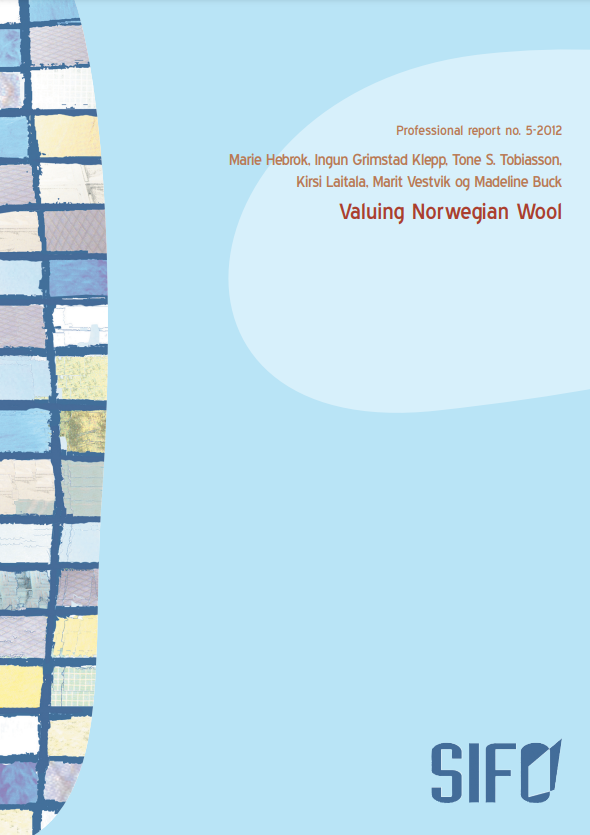Valuing Norwegian Wool
Marie Hebrok, Ingun Grimstad Klepp, Tone S. Tobiasson, Kirsi Laitala, Marit Vestvik & Madeline Buck
Summary
Wool has been called the white gold and has warmed and brought joy to the Norwegian population throughout history. It is also a textile fibre with many unused features. The starting point of the project Valuing Norwegian Wool is a desire to help Norwegian agriculture, wool based industry, and design to exploit the potential inherent in Norwegian wool as raw material, and in the Norwegian textile tradition. Norway has a thriving textile industry and several strong companies that produce products made of wool. The marketing of the origin of the raw material these products are produced from is however rather inadequate and sometimes misleading. While fewer and fewer of the products are made of Norwegian wool, consumers – not without reason – take it for granted that Norwegian producers use Norwegian wool.
The project is funded by the Norwegian Research Council and led by SIFO. The project partners include representatives from the entire value chain – from agricultural organizations, industry and commerce, and design and consumption. This report is one of many publications in the project and makes visible the challenges that exist in the value chain, but also the great potential that is there.
